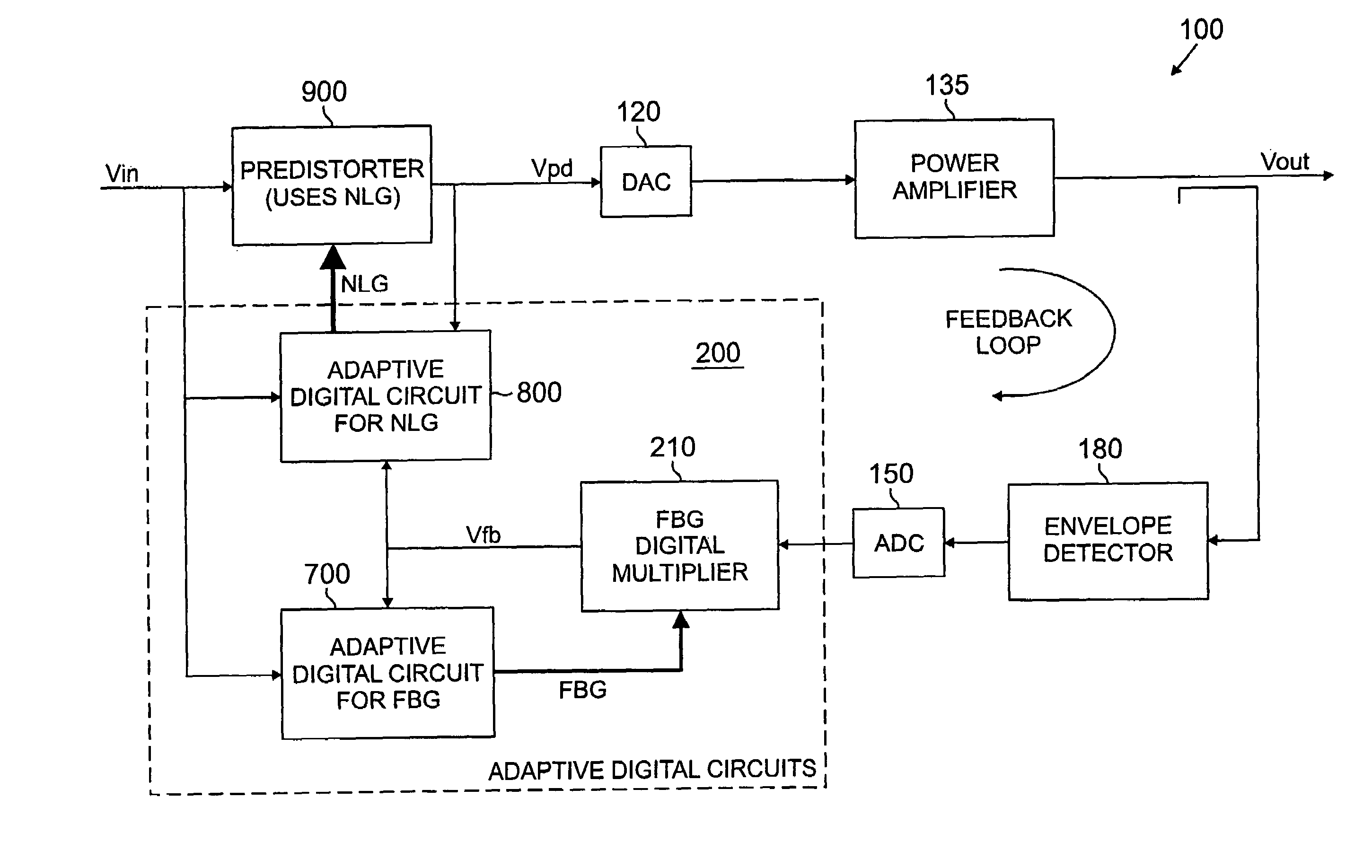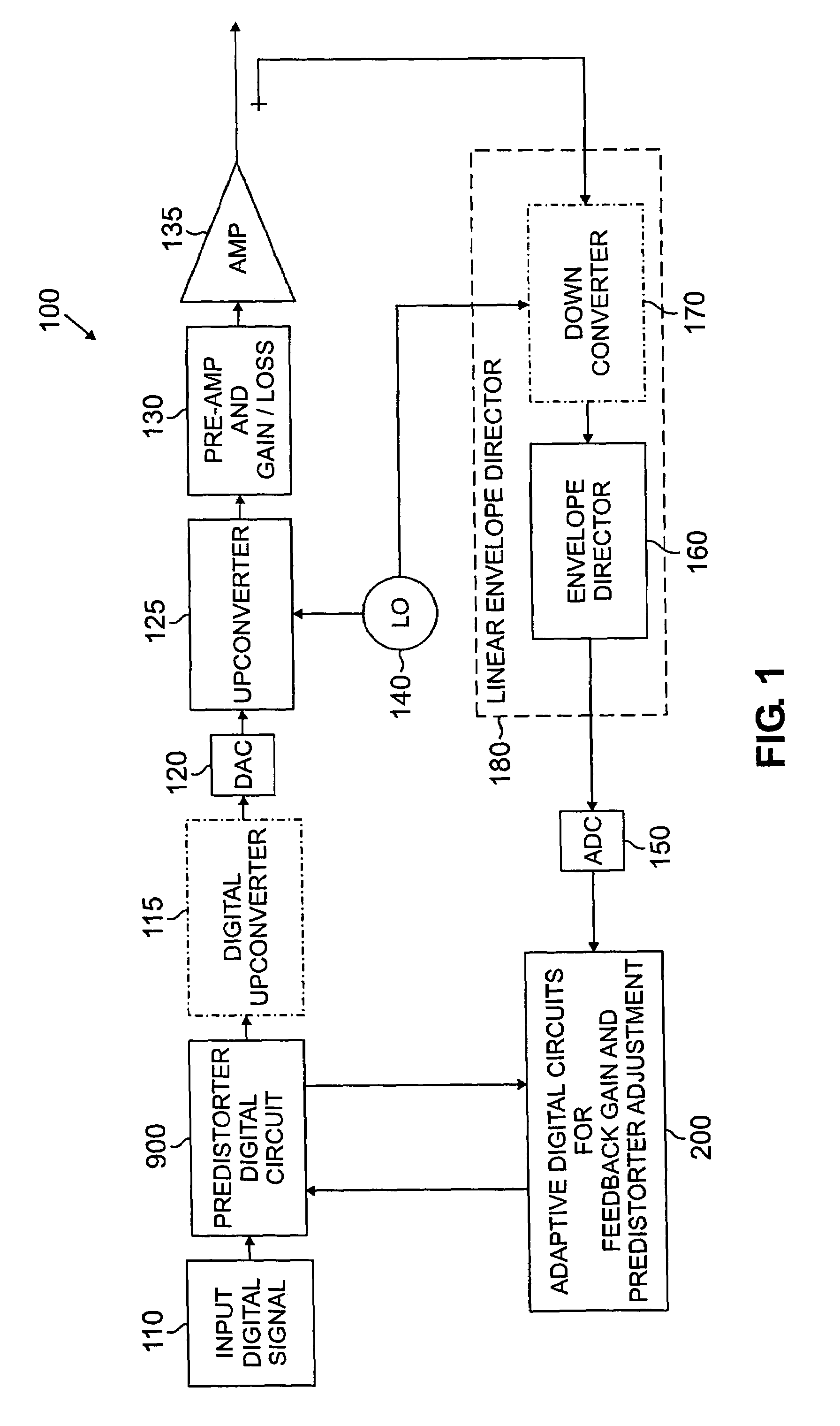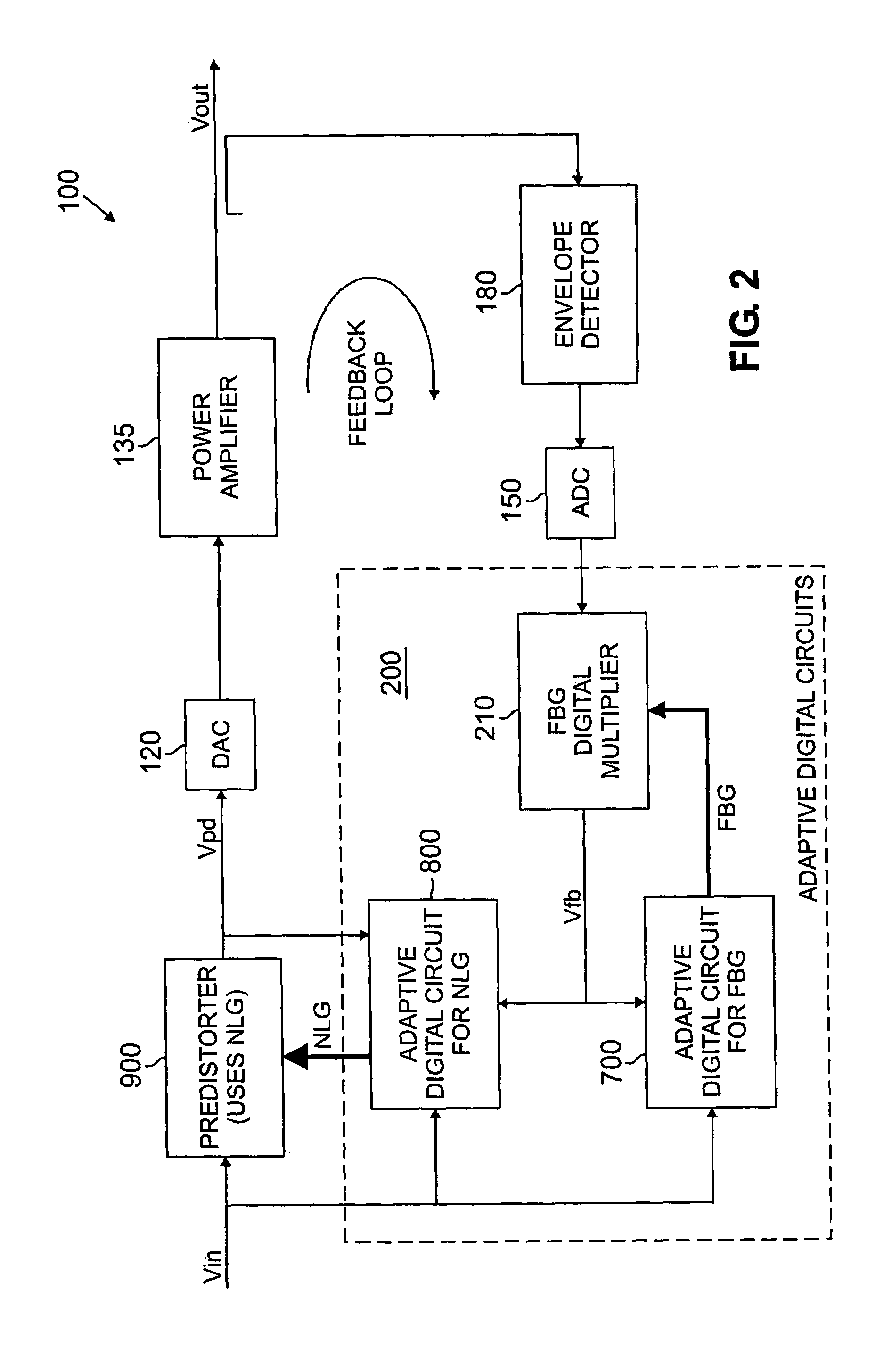Method and apparatus for adaptive digital predistortion using nonlinear and feedback gain parameters
a feedback gain and digital predistortion technology, applied in the field of amplifier nonlinearity compensation techniques, can solve problems such as the difficulty of preventing the energy transmitted by the device from spreading into adjacent channels, and the interference of devices operating on adjacent channels
- Summary
- Abstract
- Description
- Claims
- Application Information
AI Technical Summary
Benefits of technology
Problems solved by technology
Method used
Image
Examples
Embodiment Construction
[0019]FIG. 1 is a schematic block diagram of a predistortion amplification system 100 incorporating features of the present invention. As shown in FIG. 1, the predistortion amplification system 100 receives a digital input signal 110 that is applied to a predistorter 900, discussed further below in conjunction with FIG. 6, and an optional digital upconverter 115. The upconverted digital signal is then converted to an analog system by a digital-to-analog converter 120.
[0020]The analog signal is applied to another upconverter 125 that modulates the analog signal using a local oscillating frequency outputted from a local oscillator 140. The signal is preamplified at stage 130 to achieve a desired gain or loss before being applied to the primary amplifier 135. The amplifier 135 generates an amplified output signal and typically transmits it to a transmission antenna (not shown).
[0021]The amplified output signal from the output of the amplifier 135 is also applied in a feedback loop to a...
PUM
 Login to View More
Login to View More Abstract
Description
Claims
Application Information
 Login to View More
Login to View More - R&D
- Intellectual Property
- Life Sciences
- Materials
- Tech Scout
- Unparalleled Data Quality
- Higher Quality Content
- 60% Fewer Hallucinations
Browse by: Latest US Patents, China's latest patents, Technical Efficacy Thesaurus, Application Domain, Technology Topic, Popular Technical Reports.
© 2025 PatSnap. All rights reserved.Legal|Privacy policy|Modern Slavery Act Transparency Statement|Sitemap|About US| Contact US: help@patsnap.com



